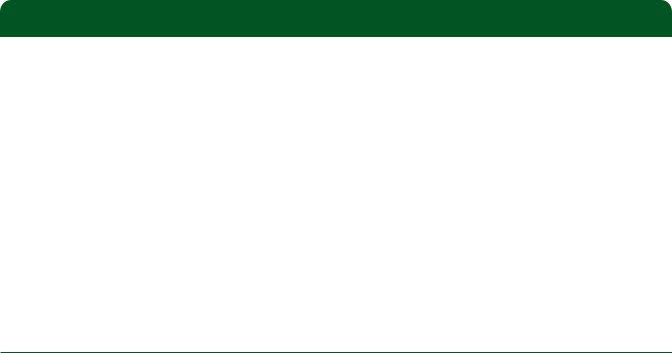Traveling with livestock or exporting semen internationally involves a series of regulations and requirements to ensure animal health and safety. Central to this process is the VS Form 17-140, United States Origin Health Certificate, a critical document for anyone involved in the international transport of livestock. Issued by APHIS representatives or accredited veterinarians at the point of origin, this form verifies the health of animals before they set hoof or paw across international borders. The form details crucial information, such as the consignor's and consignee's names and addresses, the species being transported, individual animal identifications, and health testing results. It also includes the transportation method and the U.S. port of embarkation. The destination country may require a pre-movement authorization, highlighting the form's vital role in simplifying these complexities. With regulations frequently changing, it is paramount for those involved in the export of livestock or semen to consult their local VS Area Office to confirm they meet all the necessary requirements, ensuring the process runs as smoothly as possible.
| Question | Answer |
|---|---|
| Form Name | Vs Form 17 140 |
| Form Length | 3 pages |
| Fillable? | No |
| Fillable fields | 0 |
| Avg. time to fill out | 45 sec |
| Other names | aphis vs form 17 140, us origin health certificate, vs form 17 140, us origin health online |

VS
Livestock traveling internationally must be accompanied by an oficial health certiicate issued by an APHIS representative or an accredited veterinarian at the point of origin. VS Form
Regulations on international movement of livestock can be found at: http://www.aphis.usda.gov/regulations/vs/iregs/animals/.
These regulations can change frequently so the only certain way to meet entry requirements is to call the VS Area Ofice and conirm the details.
This document is intended to give general guidance on how to complete VS Form
1.CONSIGNOR’S NAME: Last name, irst name, and middle initial of consignor, which may or may not be the owner.
2.CERTIFICATE NO.: The certiicate number is imprinted on the certiicate. All copies of the certiicate shall carry the same unaltered certiicate no. Insert this certiicate number on all VS Form
3.PAGE NO.: Show total number of pages in the shipment on each sheet (for example, a shipment that uses one VS
Form
4.DATE ISSUED: The date the veterinary inspection was performed and the animals were determined to be healthy. The form may not be signed and given to the consignor unless all testing results are negative and all other requirements have been completed.
5.U.S. PORT OF EMBARKATION (City and State): The location where the animals are loaded on the aircraft or ocean vessel for departure. If the animals are traveling to Canada or Mexico by land vehicle, list the U.S. Port of Entry across from the Canadian or Mexican Port of Entry.
6.STATE CODE: State of the port of embarkation using the
7.CONSIGNOR’S STREET ADDRESS (Mailing Address): Mailing address of the consignor.
8.CONSIGNOR’S CITY: City/Town of the consignor’s mailing address.
9.SEMEN: Check if semen is being exported. Be certain to list the species in box 15.
10.NO. DOSES OF SEMEN: Number of semen doses being exported. If box 9 was not checked “YES”, leave this blank.
11.TRANSPORTATION CLASS: Enter the number in the box for the type of transportation to be used from the point
of embarkation loading for export. For example, if a horse is being transported in a truck to an airport so the animal can be exported on an airplane, the Transportation Class is “AIR”.
12.CONSIGNOR’S STATE: State of consignor’s mailing address.
13.STATE CODE: The
14.ZIP CODE: Zip code of the consignor’s mailing address.
NVAP Module 2: Role of Agencies, Health Certiicates
October 2010 • Page 1 of 3
This information was developed by staf veterinarians at the CFSPH and approved by APHIS for use as training materials for the USDA APHIS National Veterinary Accreditation Program.

VS Form
15.SPECIES: A separate certiicate must be used for each species.
16.CONSIGNEE’S NAME AND STREET ADDRESS: Name and mailing address of consignee.
DESTINATION COUNTRY: Destination country name.
ENTER CODE: The
17.FARM ORIGIN: Name, street address, city,
or consignor.
18.INDIVIDUAL IDENTIFICATION: (If more lines are needed – use VS Form
A.ID NO. OR DESCRIPTION: ID requirements vary by species. Record all forms of ID including permanent brands, tattoos, and registration numbers. Color markings are part of equine and llama identiication and need to be listed. For electronic (microchip) identiication, the location of where the chip was place should always be included. Also list the reader device since not all readers read all microchips.
B.AGE: Indicate age and the unit of measure of each animal in years (y), months (m), weeks (w), or days (d). For young animals, the age in months, weeks, and days are commonly used as the unit of measure. For older animals, the age in years would commonly be recorded. For example, a 10 year old horse would be listed as 10y, or a 4 week old horse could be listed as 1m or 4w.
C.SEX: Indicate the sex of the animal (M – Male, F – Female, NM – Neutered Male, NF – Neutered Female).
D.BREED: Use breed codes located on back of form.
E.MODIFIED ACCREDITED AREA (TB): Check the box if the animals originate from a TB Modiied Accredited
Area. (Check the status through the State Animal Health Oficial’s Ofice of the state of origin).
F.DATE: The date the TB test was completed (observation/palpation date). Make sure to also mark in the area above it, the appropriate box indicating whether the test was read at 48 HRS or 72 HRS.
G.CERTIFIED BRUCELLOSIS FREE AREA: Check the box if the animals originate from a Certiied Brucellosis
Free Area. (Check the status through the State Animal Health Oficial’s Ofice of the state of origin).
H.DATE: Date the blood sample was drawn from the animal.
I.VAC: Use oficial vaccinates “OV” or vaccination date when required by country of destination.
For the next titers (1/25, 1/50, 1/100), show the animal was negative by including an “N” in the box that corresponds to the highest negative titer required.
J.1/25:
K.1/50:
L.1/100:
NEGATIVE RESULTS OF OTHER TESTS:
DISEASE: Name of the disease being screened; use the disease name that is mentioned in the destination requirements.
TYPE TEST: Name and type of test used to screen for the disease; use the test type that is mentioned in the destination requirements. If the destination did not specify the test type, use the test type the laboratory performed (AGID, PCR, ELISA, etc.).
M. DATE: Date the sample was collected from the animal for the above test type.
N. DATE: Date the sample was collected from the animal for the above test type.
O.DATE: Date the sample was collected from the animal for the above test type.
19.DATE ENDORSED: Date the federal veterinarian endorsed the certiicate. This will be completed by the federal veterinarian.
20.NAME OF ISSUING VETERINARIAN: Print last name, irst name, and middle initial of the accredited veterinarian who is issuing (signing) this form.
21.STATUS: As an accredited veterinarian, check the Accredited box.
NVAP Module 2: Role of Agencies, Health Certiicates
October 2010 • Page 2 of 3

VS Form
22.TOTAL NO OF ANIMALS: Total number of animals certiied for export or donated semen. Include numbers from all attached VS Forms
23.SIGNATURE OF ENDORSING FEDERAL VETERINARIAN: Signature of a federal veterinarian. In some instances, a USDA Oficial Veterinary Seal may be mandatory for the certiicate to be complete.
24.NAME OF ENDORSING FEDERAL VET: Printed name of the federal veterinarian signing box 23. This will be illed out by the federal veterinarian.
25.SIGNATURE OF ISSUING VETERINARIAN: Signature of the veterinarian who is issuing this form. It must be the veterinarian whose name was printed in box 20.
If more space is needed when illing out VS Form
VS Form
Complete all boxes on the continuation sheet as completed in the main form.
NOTE: The Certiicate number from VS Form
Form
NVAP Module 2: Role of Agencies, Health Certiicates
October 2010 • Page 3 of 3